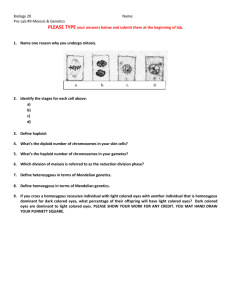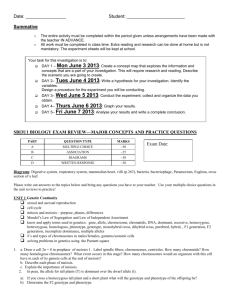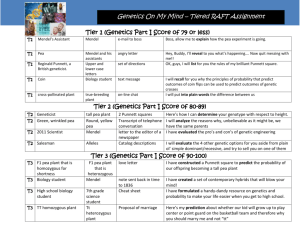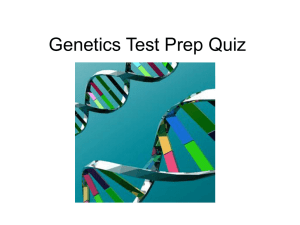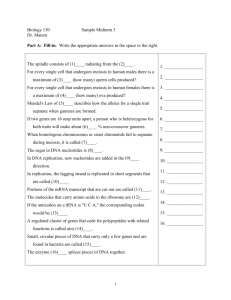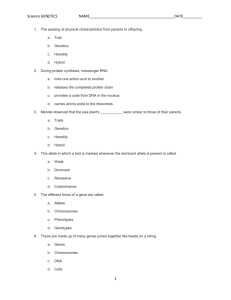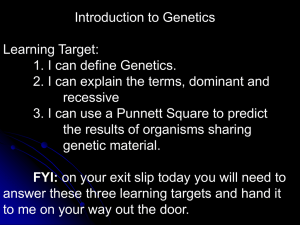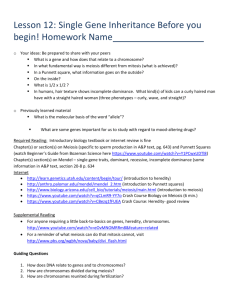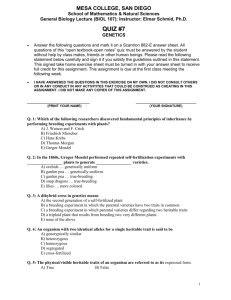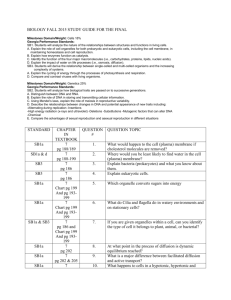Unit 7: Genetics LTC #13 Name: Date: Period: ______ LT #1 – I can
advertisement
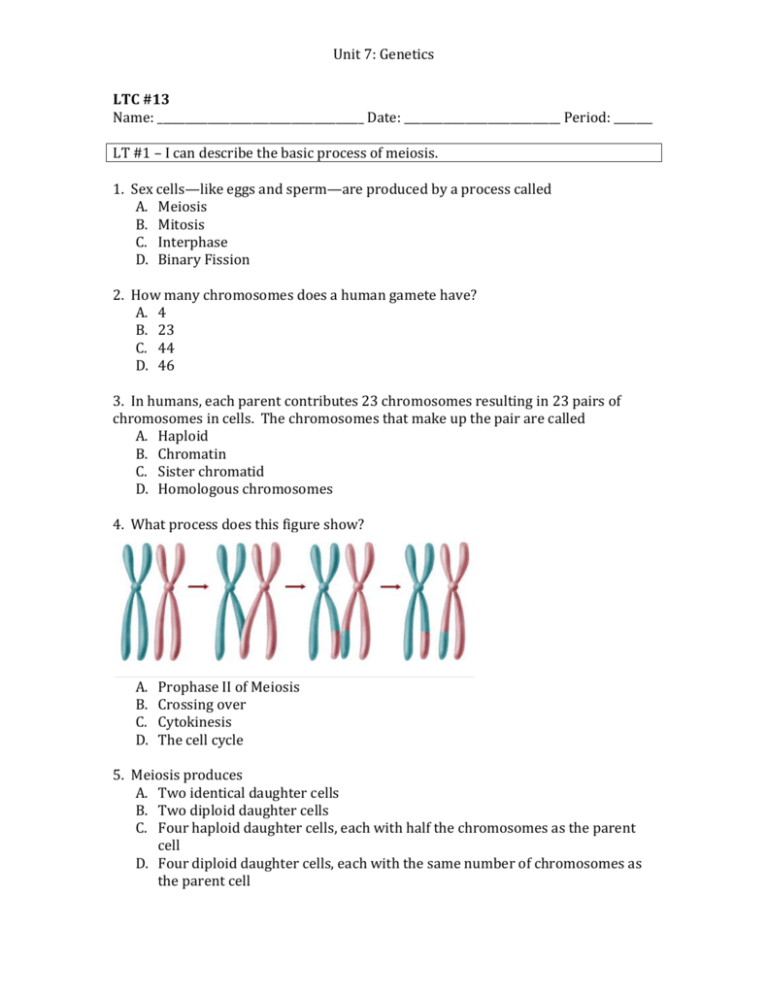
Unit 7: Genetics LTC #13 Name: _____________________________________ Date: ____________________________ Period: _______ LT #1 – I can describe the basic process of meiosis. 1. Sex cells—like eggs and sperm—are produced by a process called A. Meiosis B. Mitosis C. Interphase D. Binary Fission 2. How many chromosomes does a human gamete have? A. 4 B. 23 C. 44 D. 46 3. In humans, each parent contributes 23 chromosomes resulting in 23 pairs of chromosomes in cells. The chromosomes that make up the pair are called A. Haploid B. Chromatin C. Sister chromatid D. Homologous chromosomes 4. What process does this figure show? A. B. C. D. Prophase II of Meiosis Crossing over Cytokinesis The cell cycle 5. Meiosis produces A. Two identical daughter cells B. Two diploid daughter cells C. Four haploid daughter cells, each with half the chromosomes as the parent cell D. Four diploid daughter cells, each with the same number of chromosomes as the parent cell Unit 7: Genetics 6. What phase of meiosis is shown in the figure below? A. B. C. D. Prophase II Metaphase I Telophase I Telophase II 7. What phase of meiosis is show in the figure below? A. B. C. D. Metaphase II Prophase I Telophase II Metaphase I LT #2 – I can identify and explain Mendel’s experiments, the law of segregation, and the law of independent assortment. 8. The father of genetics is A. Mendel B. Einstein C. Newton D. Darwin Unit 7: Genetics 9. The study of heredity is known as A. Ecology B. Chemistry C. Genetics D. Evolution 10. Which of Mendel’s laws states that two alleles for each trait separate during the formation of gametes (meiosis). A. Law of conservation of energy B. Law of segregation C. Law of independent assortment D. Law of conservation of mass 11. Which of Mendel’s laws states that genes for different traits segregate independently, such that the genes for one trait do not influence another trait? A. Law of conservation of energy B. Law of conservation of mass C. Law of independent assortment D. Law of segregation LT #3 – I can define and provide examples of the following: genotype, phenotype, dominant allele, recessive allele, homozygous, and heterozygous. 12. Different forms of a single gene are called A. Genetics B. Allele C. Recessive D. Dominant 13. Based on his observations, he decided that some alleles must be ___________ over others. We called the allele that gets masked ____________. A. Dominant, Recessive B. Haploid, Diploid C. Recessive, Dominant D. Diploid, Haploid 14. Which of the following represent a heterozygote? A. YY B. Yy C. yy D. None of the above Unit 7: Genetics 15. Which of the following represents a homozygous recessive? A. TT B. Tt C. tt D. All the above 16. If tall stems are dominant over short stems in pea plants, which of the following would be the genotype of a short-stemmed pea plant? A. TT B. Tt C. tt D. None of the above 17. If tall stems are dominant over short stems in pea plants, which of the following would represent the phenotype of pea plant with the genotype Tt? A. Tall B. Short C. Yellow D. Wrinkled LT #4 - I can construct and interpret Punnett squares. 18. In rabbits, black fur is dominant over white fur. Cross a heterozygous black male with a homozygous white female. How many of the offspring will have white fur? A. 0 of 4 B. 2 of 4 C. 1 of 4 D. 3 of 4 19. In humans, free-ear lobes are dominant to attached. Cross two parents that are both heterozygous free are expecting a child. How many of the children will also be heterozygous for the trait? A. 1 of 4 B. 0 of 4 C. 3 of 4 D. 2 of 4 Unit 7: Genetics 20. In pea plants, there are two alleles for seed texture (R = round and r = wrinkled) and two alleles for seed color (Y = yellow and y = green) Cross two pea plants that are heterozygous for each trait. How many of the predicted offspring will be round and yellow? A. 1 out of 16 B. 3 out of 16 C. 6 out of 16 D. 9 out of 16

